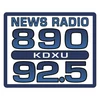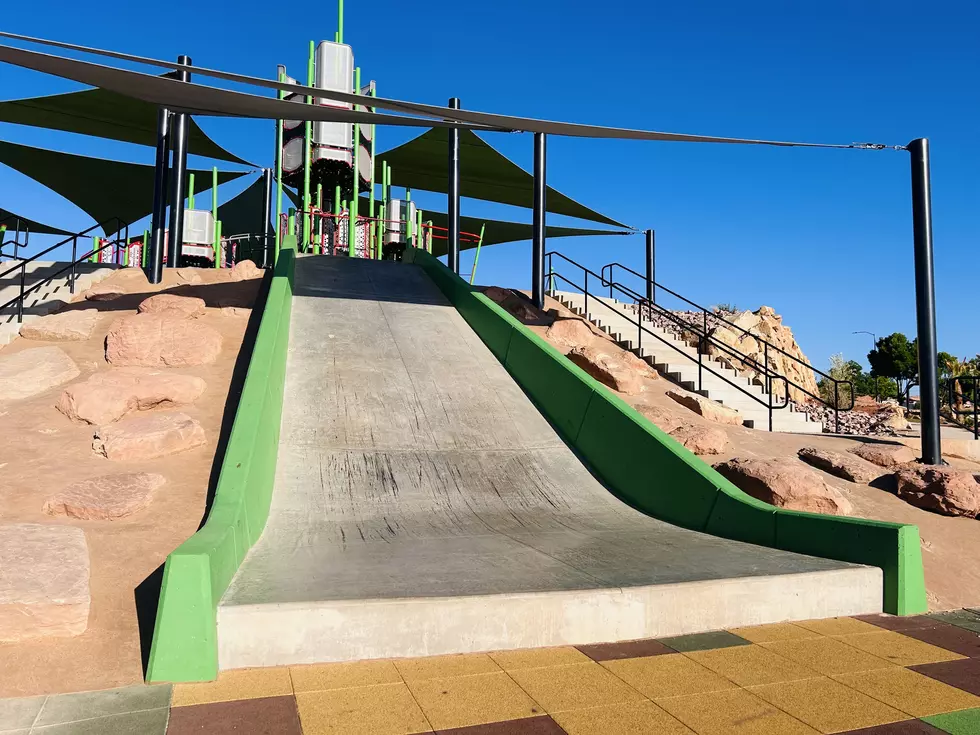
US States With The Worst Drivers — Where Does Utah Rank?
I've lived in 10 different state in the USA during my lifetime and one common link among them all is that the residents of the different locales think they have the worst drivers in America.
It's easy to believe, especially if you just got home after some numbskull just cut you off in traffic and another thickheaded driver had his left blinker on and then turned right in front of you.
But in an attempt to formalize everyone's complaints, several different websites studied the habits and records of drivers and came up with a handful of lists that give an indication of the real worst drivers.
The top 10 worst driving states in a list compiled by SmartAsset.com and publicized by worldpopulationreview.com has the worst drivers in the USA as Mississippians, with our neighbors in Nevada coming in a close second.
Utah ranked as the 35th worst drivers in the country (or the 16th best!).
SmartAsset's analysis evaluated three categories to determine the states with the worst drivers. The first was the percentage of insured drivers within the state. The next was the number of DUI arrests per every thousand drivers. The third was the number of fatalities per 100,000 miles driven.
WalletHub.com went a little deeper, entering 31 areas of evaluation in their study and came up with Hawaii as the state with the worst drivers. Mississippi, which was named worst by SmartAsset, was ranked 19th worst by WalletHub. Nevada was seventh worst, while Utah finished as the 20th worst among the 50 states.
A study by BankRate.com, used four key categories: Cost, driving quality, safety and weather. BankRate found California to be the worst state for drivers, followed by Louisiana and Maryland. Utah ranked very well in this study, finishing as the third best state for drivers in the country. Nevada was 14th.
While we'll always feel like the drivers where we live are the absolute worst, as it turns out, a lot of other people around the country feel the same way -- and they're right.

Confidently Merging Onto Freeways: Experts Give Tips For Utah Drivers
I've seen a couple of angst-ridden posts online lately, people stress-writing about a recent experience in getting on the freeway.
I feel your pain.
I remember as a new driver a few years ago (OK, more than a few) the biggest stress I had was the thought of having to merge with full-speed drivers when trying to merge onto the fast-moving Interstate.
How fast should I be going? What if they don't see me? What if there's no room to merge? Who has the right of way?
All these questions popped into my young mind as the day approached in Driver's Ed to make that terrifying trip onto the freeway.
My friends didn't help much, offering up advice like, "Don't worry, they'll let you in," or "They'll see the Driver's Ed sign on your car and stay far away." One friend even counseled, "You probably won't die. Don't worry about it."
The day in question came and I was a nervous wreck. After a few minutes of driving, the instructor told me to head for the freeway onramp so we could do a little freeway driving. He then slipped off his shoes and went to sleep (it was early in the morning).
So it was me driving, a sleeping instructor and two equally nervous rookie drivers in the backseat.
I briefly considered skipping the freeway trip and just heading back to the school, but I had two stool-pigeons in the backseat and the fear of the instructor waking up, so I went for it.
As I attempted to make the merge from the onramp, I sped up to freeway speed (55, or so I thought), checked my mirrors, checked my blind spot and began to make the move.
But the first problem I ran into was this: It might have been 1982 and the speed limit was 55, but 55 was not freeway speed. Every other car (including those in the slow lane) was going much faster than that.
I also had the great fortune of having a police car right behind me, adding to the nervousness factor.
It all happened so fast, but I remember picking a gap in traffic, signaling and then going for it. At the same time, traffic began to slow ahead of me and the gap began to close quickly. The only thing I could think to do was stick the nose of the car in the gap and mutter a soft prayer that the huge truck approaching had good brakes.
A few horn blasts later (enough to wake up the Driver's Ed teacher), I was in the lane and there were no loud crashes. I had survived the great merge and would eventually get that coveted driver's license.
Maybe it was my own fault, but I wish I had known about these basic rules for merging before the harrowing experience. These were published recently by the St. George Police Department:
- You should use the acceleration lane (on-ramp) to match your speed with the other vehicles before pulling onto the roadway.
- Do not drive so slowly that you block traffic. Slow driving is not always safe driving.
- If your speed is causing cars to stack up behind you, you are unsafe, discourteous and breaking the law.
- Do not insist on the right-of-way

Rising Concern: Fatal Wrong-Way Crashes Grip Utah Commuters
Last year, we had a double-fatality in Southern Utah stemming from a wrong-way driver. Last month a woman was killed when a Utah Highway Patrol officer had to forcibly crash into the woman's vehicle to stop her wrong-way travel.
Last week, four people narrowly escaped serious injury when they had a major collision near the port of entry in Southern Utah after entering the freeway going the wrong direction.
Although wrong-way driving crashes are nowhere near the most common crashes, they are by far the most deadly.
According to the Utah Department of Transportation, 13 percent of all wrong-way crashes end with at least one fatality. That's nearly triple the rate of crashes involving leaving the roadway or impaired driving.
Some people on social media want to blame the freeway engineers.
- "I have never seen a state with so many wrong way crashes. 30 years living near one of the busiest interstates in the country and I never saw a wrong way crash. I think UDOT may want to look at ramp signage in other states. I know where I came from if you looked in your rear view mirror getting off the ramp, you knew if you were going the other way, you were going the wrong way. Those huge do not enter signs in multiple spots on the off ramps were very noticeable along with huge one way arrow signs on the ramps and at the end of the ramp," said one commenter.
- "There has to be a way to stop these people from entering from the wrong way. My suggestion would be to put in spike strips that would pop their tires therefore not allowing them to enter. Sounds harsh, but I would rather see them have to replace tires rather than take innocent lives." Also, see this link for why spike strips aren't used.
- "So predictable. The State of Utah should hang their head in shame on this one. The lack of reflectorized signage, reflectorized road markings, overhead street lighting, and poor highway design all contributed to this horrible wreck. That area is so dark at night you can't see your hand in front of your face. The total lack of concern and planning on the part of UDOT is just plain sinful."
But others have come to the defense of the road makers.
- "Unfortunately changing the roadways won't stop people from driving under the influence." (Note: the driver of the wrong-way crash has not been accused of impaired driving. The investigation will reveal more).
- "No matter what the exit looks and built like you still drive on the same side of the road just like a road in town. And if you are coherent you would know if you were going south north west east."
- "A little research on the subject would show it's on the rise nationwide with Texas and Florida leading with the most wrong way crashes."
To back up that last comment, information from the 2010s tells us that Utah had only 3.3 deaths per year (with 30 crashes) during that time from wrong-way crashes. In contrast, Texas had 67.7 deaths per year with 446 wrong-way crashes and Florida had 34.4 DPY with 226 crashes.
Unfortunately, Utah has already had six wrong-way related fatalities in 2024.
Interestingly, the AAA Foundation said its research showed the odds of being a wrong-way driver increased with 1. alcohol impairment; 2. older age, and 3. driving without a passenger.
Utah is being proactive in trying to stop these type of accidents.
This year, UDOT has installed 15 wrong-way driving detection systems around the state to help prevent wrong-way driving crashes.
UDOT began installing these systems in February 2023, and is in the process of installing eight more.
The new wrong-way driver detection and alert system consists of a detector unit, which includes a radar and high definition/infrared cameras, and a series of red “Wrong Way” warning signs equipped with solar-powered, high-intensity LED lights. When a wrong-way driver is detected by the radar or the cameras, the LED signs activate to alert the driver. If the vehicle continues going the wrong way, the system sends automated alerts to the UDOT Traffic Operations Center (TOC) and the Utah Highway Patrol (UHP) so the driver can be tracked and stopped as quickly as possible.
So what should you do if you encounter a wrong-way driver?
UHP Sgt. Cameron Roden told the Deseret News that if you see a wrong-way driver that you slow down as much as possible. “A lot of these crashes we are seeing happen toward the left-hand side of the road,” he said. “And so, if you see a wrong-way vehicle coming and can maneuver to the right, get over to the right and stop.”
“Each situation is so unique and independent,” Roden emphasized. “Some of these crashes are very violent and sudden.” Drivers sometimes do not have enough time to react due to this.

Distracted Driving Awareness Month: Don't Let a Text End Your Life
April is Distracted Driving Awareness month, which is more relevant to Southern Utah than one might think.
According to the St. George Police Department, distracted driving is what causes the most crashes in Southern Utah, and that goes for a good chunk of the United States as well.
In an article from AAA Living, various statistics show the danger distracted driving poses to anyone willing to look away from the road while behind the wheel.
The article uses information from the National Highway Traffic Safety Administration to show how fast a distracted driver can their lives away.
The article said, “According to the National Highway Traffic Safety Administration (NHTSA), five distracted seconds at the speed of 55 mph is the same as driving the entire length of a football field with your eyes closed.”
Distracted driving isn’t just texting and driving, it’s anything that takes your eyes off the road while you're actively controlling the vehicle. You could be eating, getting a bit too into the music you're listening to, turning your head to talk to your passengers, and even fiddling with the radio can be interpreted as distracted driving.
The article said, “According to statistics from the NHTSA, nine people are killed and more than 1,000 are injured daily from distraction-related crashes in the United States. The NHTSA estimates that distracted driving killed 3,522 people in 2021, which is the most recent data available. These sobering statistics serve as a reminder that we can all do better at keeping our eyes on the road.”
New information from the NHTSA stated 3,308 people lost their lives in 2022 as a result from distracted driving. While that is less than 2021’s numbers, that’s 3,308 too many.
If you are out on the road and feel there is something other than driving that requires your attention, please pull over and find a safe place to accomplish your task before continuing. Your life is far too precious to end over something as superfluous as a text.

More From KDXU 890 & 92.5









